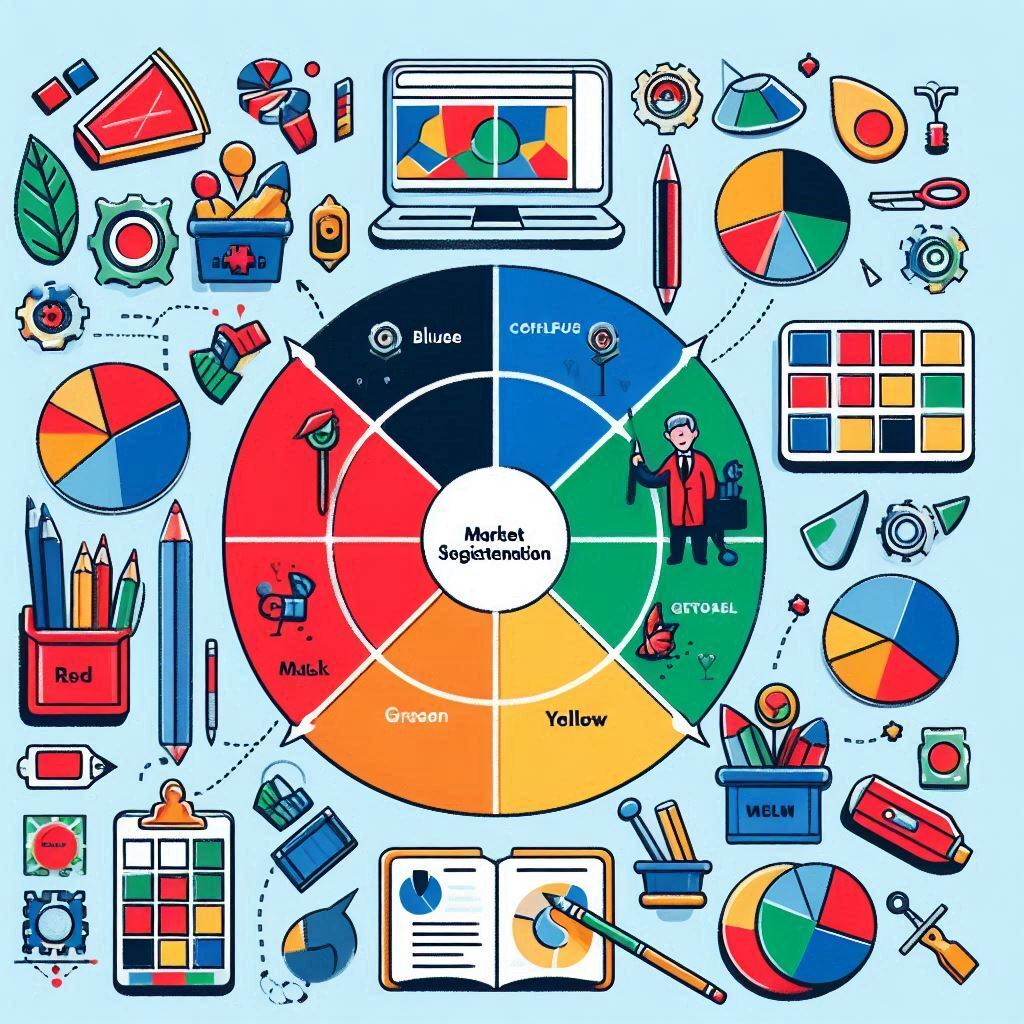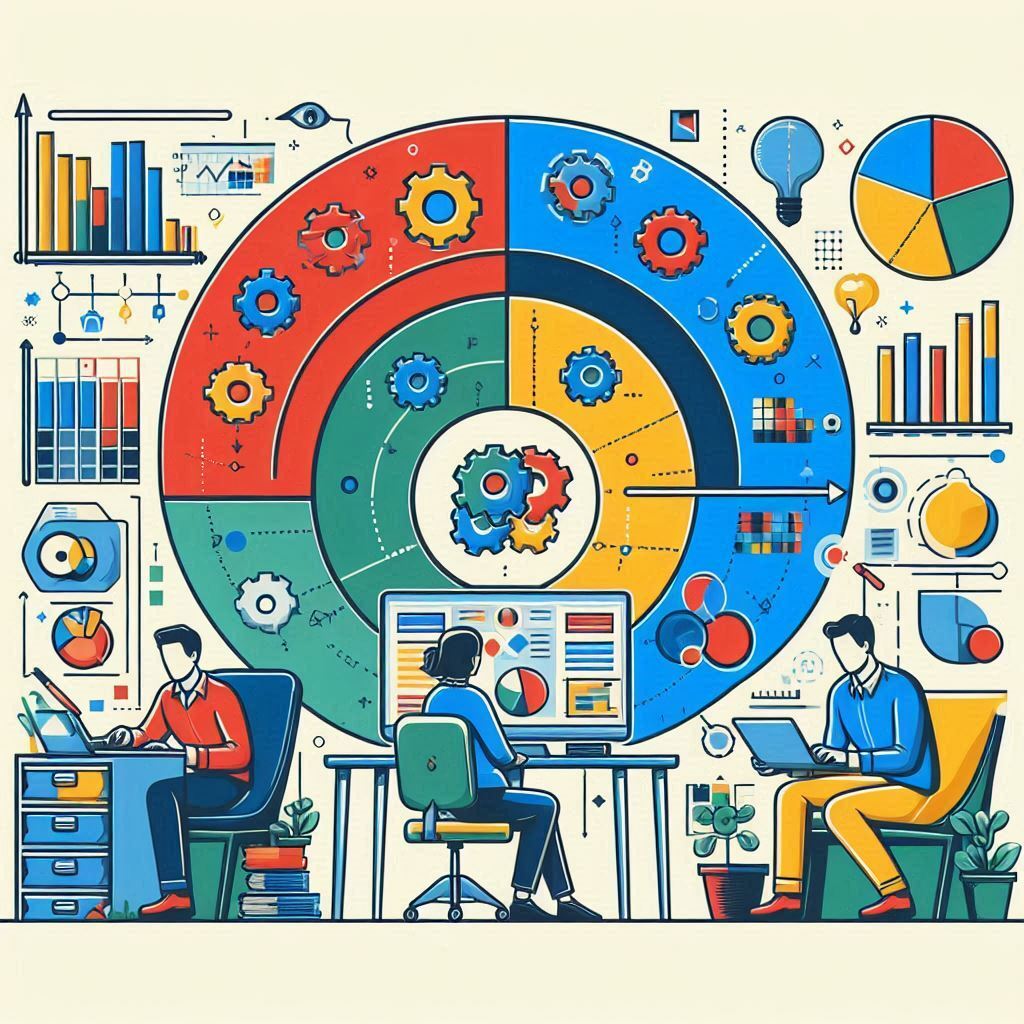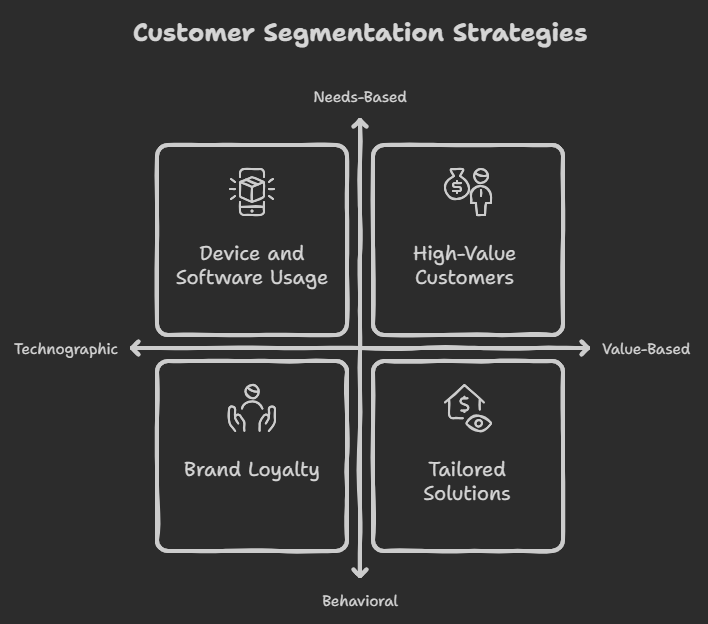What are the 5 customer segment groups? The Ultimate Guide
Customer segmentation is a fundamental aspect of business success. It enables companies to target specific groups using custom marketing tactics, boosting their conversion chances. In this guide, we unveil the five key customer groups in the current market, elaborating on their traits and preferences. Today, we dive into customer segmentation and why it matters for your business.
Defining Market Segmentation

Customer segmentation categorizes customers based on shared traits like demographics and behaviors. It assists companies in understanding their consumers and delivering individualized offers that sway buying behavior. Businesses typically analyze four primary types of customer segmentation for sales and market analysis: demographic, geographic, psychographic, and behavioral segmentation.
It is essential to sidestep common segmentation pitfalls like relying on obsolete or incompletedata and not adjusting to customer behavior changes. Customer segmentation software and utilities can aid businesses in simplifying their segmentation efforts.
The Cruciality of Market Segmentation

This marketing method involves dividing a target market into identifiable segments. By conducting market research via segmentation, businesses can acquire a deeper understanding of their customers, leading to practical suggestions and anticipated business results. The segmented categories include behavioral, psychographic, demographic, geographic, and firmographic sections.
Behavioral segmentation delves into customer actions, offering insights into their interactions with the brand. Psychographic segmentation, on the other hand, emphasizes qualitative traits, customizing marketing tactics to align with customer preferences. Demographic segmentation categorizes customers based on age or gender, while geographic segmentation focuses on their physical location. Firmographic segmentation describes firm attributes to identify prospective customers.
Companies should employ various strategies to attain a comprehensive understanding of target consumers. This segmentation method enables businesses to define and refine future products, market effectively, and drive customer engagement and sales. Businesses can optimize segmentation efforts using customer segmentation software and utilities like Amplitude and Jumbo Interactive.
Process of Carrying out Segmentation Research

This research process involves splitting customers into groups using shared traits such as demographics and behaviors. By gaining a deeper understanding of customers through segmentation, businesses can deliver tailored communication and offers, influencing buying behavior. Companies analyze four primary types of customer segmentation: demographic, geographic, psychographic, and behavioral.
These data types, when collected, help businesses create customer personas for more targeted communication and marketing.
Unraveling the Five Key Types of Market Segmentation
Understanding Behavioral Segmentation: Decision-Based Grouping
Behavioral segmentation is used to assess customer behavior patterns. A crucial focus area is deciphering specific customer choices and their interactions with a brand. By extracting insights from customer loyalty or engagement, businesses can identify potential customers likely to purchase. Using behavioral segmentation, businesses can craft their marketing approach to target specific customer clusters successfully.
Tools like Amplitude and Jumbo Interactive can simplify the segmentation process.
Demystifying Psychographic Segmentation: Lifestyle-Based Grouping
Psychographic segmentation groups customers based on their lifestyles and qualitative aspects. By analyzing customer personae in-depth, businesses can tailor their marketing tactics to align with their preferences. For instance, a clothing brand may leverage psychographic segmentation to target customers favoring sustainability and environmentally friendly fashion.
By understanding the customers’ lifestyle choices and values, the brand can craft a personality and marketing technique that resonates with this customer group.
Breaking Down Demographic Segmentation: Profile-Based Grouping
Demographic segmentation involves categorizing customers based on parameters like age and gender. This information allows businesses to devise targeted marketing strategies. A clothing brand targeting young adults may focus on trendy fashion to appeal to its demographic. Similarly, a retirement planning service can tailor its communication and offerings to appeal to older individuals on the brink of retirement.
Exploring Geographic Segmentation: Location-Based Grouping
Geographic segmentation divides the target market based on customer locations. By knowing customers’ geographic specifics, businesses can gain insights into their preferences, allowing for personalized and targeted marketing ventures. Geographical data can be combined with demographic or psychographic data to better comprehend the target audience.
Decoding Firmographic Segmentation: Business-Based Grouping
Firmographic segmentation focuses on describing business attributes, enabling companies to identify potential prospects using factors like size and funding. By adopting this method, businesses can tailor their marketing tactics to effectively reach and engage with potential customers.
Avoidable Pitfalls in Market Segmentation
Market segmentation may have fallacies, such as creating overly precise or tiny segments. For instance, a clothing retailer may target left-handed 25-to-30-year-old customers living in a particular city. While this segment seems unique, it could be too small to drive significant sales.
Moreover, it’s crucial not to be rigid about segmentation criteria, as customer tastes can evolve. A failure to intermittently reassess and tweak segments may result in missed opportunities. Combining different segmentation tactics, such as demographic, behavioral, and psychographic, can foster a holistic understanding of customers.
Diverse Marketing Segmentation Strategies
Special Focus on Targeting and Positioning
Targeting and positioning are subsequent strategies for market segmentation. Targeting evaluates a segment’s potential value, while positioning highlights a product’s benefits to the chosen segment. Businesses can streamline marketing efforts and drive sales by effectively targeting segments and positioning the product to meet their needs.
In another instance, a software enterprise may segment customers who frequently use its product and position it as a productivity-boosting solution. This tailored communication would appeal to the target segment and motivate them to use the software.
Assessing User Segmentation Vis-à-Vis Customer Segmentation
Understanding and targeting different groups effectively requires evaluating user segmentation against customer segmentation. User segmentation applies to individuals interacting with a product or service, while customer segmentation is specific to those purchasing.
For digital enterprises, technographic segmentation can help understand customers’ device usage and technologies. Behavioral segmentation analyzes customer actions. Needs-based segmentation identifies financial and emotional needs, while customer status segmentation considers the customer lifecycle. Utilizing customer segmentation software and tools like Amplitude and Jumbo Interactive can aid in personalizing marketing strategies.
Examining Typical Customer Segments
User segmentation refers to those who interact with a product or service, often not yet customers, e.g., free trial users. In contrast, customer segmentation relates to individuals or companies who opt to buy the product. Many times, in B2C SaaS, users and customers overlap. However, in B2B SaaS, the customer usually decides to pay for the product on behalf of the end-users in their business units.
The data from analyzing these segments – demographic, geographic, psychographic, and behavioral, can be used to create customer personas for more targeted messaging.
Creating Customer Archetypes for Precise Targeting
Creating archetypes or personas is a helpful technique for better-targeted marketing and communication. Businesses can create detailed customer profiles after collecting essential information from behavior, demographic, geographic, and psychographic segments. These profiles can guide targeted messaging and resource allocation for products and marketing.
Applying Five Potent Customer Segmentation Methods in the Digital Landscape

Technographic Segmentation: Tech-Based Grouping
In the digital landscape, in addition to the four basic types of customer segmentation, companies also utilize technographic, needs-based, and value-based segmentation. Technographic segmentation focuses on the types of devices, software, and technologies customers use. The gathered data can then be used to create more targeted marketing strategies.
Customer Behavioral Segmentation: Behavioral-Based Grouping
Behavioral segmentation looks at patterns in customer actions, such as brand loyalty and interactions. These insights can help shape marketing strategies to appeal to potential customers most likely to purchase. For example, tracking how often customers visit a brand’s website may provide valuable insights into purchasing behaviors.
Needs-Based Segmentation: Needs-Driven Grouping
Needs-based segmentation groups customers based on financial, emotional, and physical needs. By comprehending the specific needs of various customer clusters, businesses can offer tailored solutions that meet these demands. For the success of a user-centered product, it’s crucial to identify the needs that drive the target user’s behavior, which will guide the design strategy.
Customer Status Segmentation: Status-Determined Grouping
Customer status segmentation categorizes customers along their lifecycle. This segmentation approach helps brands engage with customers quickly with fitting offers. It improves overall customer lifetime value and maximizes returns on marketing investments.
Value-Based Segmentation: Worth-Derived Grouping
Value-based segmentation categorizes customers based on their monetary value to the business. By identifying high-value customers, businesses can prioritize their marketing and customer retention efforts. This form of segmentation ensures effective resource allocation and focuses efforts on high-potential customers for long-term profitability.
Customer Segmentation Tools and Software Worth Considering
Businesses can consider customer segmentation software and solutions to implement segmentation effectively. Options like Amplitude, which offers segmentation facilities, and Jumbo Interactive, which customizes its marketing strategy using segmentation to bolster conversions, can be beneficial. By employing these tools and techniques, businesses can gain insight into their customers and optimize their marketing efforts.

Vizologi is a revolutionary AI-generated business strategy tool that offers its users access to advanced features to create and refine start-up ideas quickly.
It generates limitless business ideas, gains insights on markets and competitors, and automates business plan creation.


